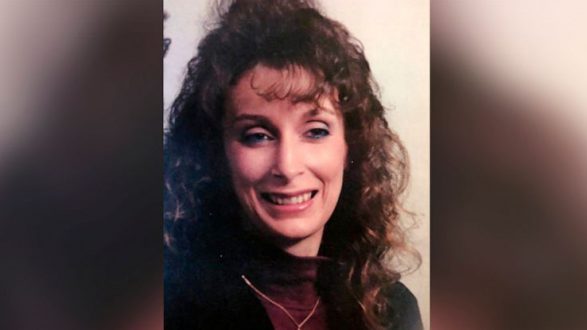
 Vancouver Police(VANCOUVER, Wash.) — Through the new investigative technique of genetic genealogy — and DNA left behind on a discarded cigarette butt — police have arrested a suspect in the 1994 murder of a 26-year-old mom.
Vancouver Police(VANCOUVER, Wash.) — Through the new investigative technique of genetic genealogy — and DNA left behind on a discarded cigarette butt — police have arrested a suspect in the 1994 murder of a 26-year-old mom.
Audrey Hoellein was raped and murdered in July 1994, according to police in Vancouver, Washington, just outside of Portland. Hoellein was separated from her husband and her son was about 5 years old at the time, according to police.
DNA was left behind at the crime scene, police said, and several suspects were considered over the years, but they were eventually eliminated because their DNA did not match.
Hoellein’s father “thought he was going to go to his grave without any resolution as to what happened to his daughter,” Vancouver police officer Dustin Goudschaal said at a news conference on Tuesday.
But in 2018, police reached out to DNA lab Parabon to help create a composite image of the unknown suspect from the DNA left behind at the crimes scene. Analysts were able to predict traits of the killer, including his hair color and eye color, said police.
Then, Parabon worked with the police department to use a new technique known as genetic genealogy to identify suspect Richard Knapp.
Through the new investigative technique of genetic genealogy, officials can take the DNA left behind at a crime scene and identify a suspect by tracing the family tree through his or her family members, who voluntarily submitted their DNA to public genealogy databases.
This allows police to create a much larger family tree than using DNA submissions to law enforcement database CODIS, CeCe Moore, chief genetic genealogist with Parabon, told ABC News.
The first public arrest through genetic genealogy was the April 2018 identification of the suspected “Golden State Killer.” Since then, genetic genealogy has helped identify more than 40 suspects in violent crimes, Moore said.
After genetic genealogy was used to pinpoint Knapp as a suspect, investigators staked him out and obtained DNA from a cigarette butt he left behind, police officials said. That recovered a DNA sample and was sent to the Washington State lab to compare to the original DNA from the crime scene — and it was a match, said police.
Knapp, 57, was arrested on Sunday during a traffic stop near his home, Goudschaal said.
Knapp, of Farview, Oregon, had been working in the area of the Portland airport, Goudschaal said.
Knapp was from the area, but it does not appear he was known to the victim, police said.
He has a criminal history, but police did not elaborate or explain why Knapp’s DNA was not in CODIS, police said.
The Hoellein family said in a statement released by the police department: “This crime not only took away a sister from her two brothers, it left a mother and father without a daughter, and a young child without a mother. Since then the family has grown with nephews that will never meet their aunt, and a grandchild that can only see grandma in pictures, only knowing her from shared memories.”
The family added that it hopes genetic genealogy “can be used to bring closure to more families across the nation.”
Knapp made a first appearance in court on Wednesday. He did not enter a plea.
His attorney did not immediately respond to ABC News’ request for comment.
Copyright © 2019, ABC Radio. All rights reserved.










